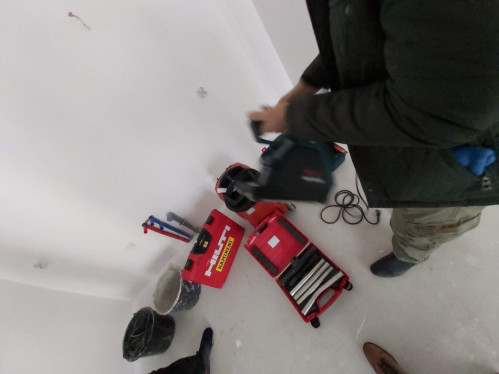How to lay tiles?

What to cut tile, terra cotta and porcelain stoneware with?
There is no shortage of proponents of the view that all longitudinal cutting, chamfering and cutting holes in ceramic tiles can be done with an angle grinder equipped with a good quality diamond disc and diamond (crown) drill bits. Such a set will work in many situations, but it will not provide a repeatable result - especially in situations where precision and aesthetics of workmanship will be a priority. Therefore, it is worth using tools and accessories dedicated to specific tasks.
Among the tools available on the market for cutting ceramic tiles, we can find both very simple manual accessories and specialized mechanical cutters:
- stylus - the simplest tool for cutting ceramic tiles is a carbide stylus with a breaker: after scratching the tile (on the glazed side, the stylus is guided along a metal ruler), we break it by pressing on both sides of the scratch (a metal rod can be put under the tile) - this method will work only for relatively soft and thin glazed tiles, but it cannot be recommended for terracotta, and certainly not for stoneware,
- manual tile cutting machines - a wide range from very cheap, inaccurate and short market cutters to professional machines suitable for precise longitudinal cuts, even for very hard stoneware and stone slabs: after scratching the glazed surface, precise breaking can be done thanks to special breakers and tops (in more expensive models, the tops are tilting, which facilitates precise breaking even of very hard and thick tiles),
- electric table saws - small devices resembling table saws, but equipped with a diamond blade (usually for wet cutting), which allow you to swing the blade from the vertical and chamfer the tiles - with small formats of tiles can be very useful, with large ones it is very difficult to achieve the expected precision of cuts,
- Electric cutting machines with guide rail - in these cutters, the diamond blade is placed above the material: it moves along the tile, which is placed stably on the table, which is an arrangement that guarantees the greatest precision (both vertical cuts and chamfering) - when using good quality diamond blades, wet cutting with table cutters with a guide allows you to obtain very even edges, without fraying and cavities.
Of the machines described, table saws with a guide offer the greatest possibilities. Combined with angle grinders (which can be used to smooth the cut edges of tiles using lamella discs with the appropriate paper weight) and a set of diamond drills and holesaws, they will meet virtually all needs for longitudinal cutting and making holes in all types of ceramic tiles.
What tools are optimal for leveling tiles?
Marking out a level on a wall in a small room, such as a small bathroom in a block of flats, is possible even with the simplest short pocket level. However, if we are going to measure a room and determine the course of tiles on an area of several tens of square meters of wall or floor, by far the best solution will be to use a long level with a vial, or even better, a laser level or cross laser.
Lasers and levelers, which display one, two or more lines, allow easy leveling and determining right angles. Depending on the model, their light has a range of several to tens of meters, and the precision of professional devices oscillates around +/- 0.2 mm/m. Among laser leveling devices there are also tiling lasers - devices dedicated to laying wall and floor tiles. They do not require special adjustments (such as the use of tripods): their design allows for immediate determination of right angles on horizontal and vertical surfaces. In addition, they display a third line that determines exactly the 45° angle, which is the diagonal of a square. This is especially useful when laying equilateral tiles: thanks to the third line, we can precisely determine the position of the tiles through which the laser beam passes.